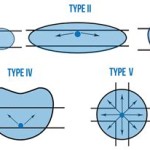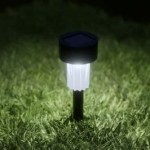How To Take Outdoor Portraits With Flash
Outdoor portraiture with flash can elevate your photography by adding depth, drama, and control to your images. Mastering this technique requires attention to specific elements, such as lighting direction, modifier selection, and exposure settings. Understanding the role of each aspect is crucial for capturing stunning outdoor portraits with flash.
This article delves into the essential aspects of outdoor portrait photography with flash, providing a comprehensive guide to help you achieve professional-quality results.
Lighting Direction
The direction of your flash significantly impacts the mood and tone of your portraits. Front lighting creates a flat, even illumination, while side lighting sculpts the subject's features, adding depth and dimension. Backlighting produces dramatic silhouettes and highlights hair and edges. Experiment with different lighting angles to find the most flattering and effective direction for your subject.
Modifier Selection
Flash modifiers, such as diffusers, softboxes, and umbrellas, alter the quality and spread of light from your flash. Diffusers soften the light, reducing harsh shadows and creating a more flattering effect. Softboxes provide a broader, more even light source, while umbrellas offer a wider spread of light with a softer, less direct quality. Choose the appropriate modifier based on the desired effect and the environment.
Exposure Settings
Balancing the ambient light with the flash is crucial for well-exposed portraits. Set your camera to manual mode to control both aperture and shutter speed. Use a wider aperture (e.g., f/2.8 or f/4) to isolate the subject from the background and create a shallow depth of field. Adjust the shutter speed to match the ambient light, typically around 1/125s or 1/250s. Use the flash to fill in shadows and ensure even illumination.
Power Adjustment
The power of your flash determines the intensity of the light output. Adjust the power based on the distance to your subject and the ambient light conditions. Start with a lower power setting and gradually increase it until you achieve the desired level of illumination. Avoid overexposing your subject by using too much flash power.
Background Control
The background of your portraits plays a significant role in the overall composition. Choose a background that complements your subject and doesn't create visual distractions. Use a shallow depth of field to blur the background or position your subject against a solid-colored backdrop for a cleaner look.
Composition Techniques
Apply compositional techniques to create visually pleasing portraits. Use the rule of thirds to position your subject off-center, creating a more dynamic composition. Incorporate leading lines to draw the viewer's eye towards the subject or use negative space around the subject to create a sense of isolation and impact.
Post-Processing
Post-processing can enhance the final image and correct any exposure or color balance issues. Use editing software to adjust contrast, saturation, and sharpness. Remove unwanted elements, such as blemishes or distracting objects, to create a polished and professional finish.
Mastering outdoor portraiture with flash requires practice and attention to detail. By understanding the essential aspects outlined in this article, you can create stunning portraits that capture the beauty and personality of your subjects.

On Flash Outdoors Tangents

How To Mix Ambient Light And Fill Flash For Outdoor Portraits

How To Take Great Portraits Outdoors Using Flash
Natural Light Vs Off Flash An Eye Opening Demonstration Petapixel

Off Flash Vs Natural Light Which Is Best For Outdoor Portraits Shutterbug

Using Off Flash To Fix Lighting Problems For Outdoor Portraits

Outdoor Portrait Using Off Flash First Post Photography On Fstoppers

How To Use Off Flash For Portraits Outdoor Photography

On Flash Outdoors Tangents

Fill Flash Photography How To Get Beautiful Portraits Even In Bad Light
Related Posts







